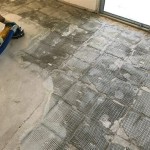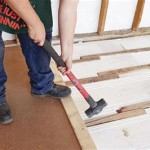Essential Aspects of Floating Hardwood Floor: Elevate Your Home's Aesthetics
Floating hardwood flooring has emerged as a popular choice for homeowners seeking an elegant and durable flooring option. Unlike traditional hardwood flooring, floating floors do not attach to the subfloor but float on top of it. This unique installation method offers several benefits, including ease of installation, versatility, and cost-effectiveness.
Installation: A Breeze With Floating Floors
Installing floating hardwood floors is significantly simpler than traditional hardwood. The planks come with pre-attached locking systems that allow for quick and effortless assembly. Using a simple click-and-lock mechanism, you can connect the planks without the need for nails or adhesives. This feature makes floating floors ideal for DIY enthusiasts looking to save on installation costs.
Versatility: Adapting to Different Surfaces
Floating hardwood floors boast remarkable versatility, making them suitable for a wide range of subfloor types. Whether your subfloor consists of concrete, plywood, or existing tile, floating floors can be easily installed on top. This flexibility allows for seamless transitions between different flooring materials, creating a cohesive and aesthetically pleasing interior design.
Cost-Effectiveness: Value for Your Investment
Floating hardwood floors offer excellent value for money compared to traditional hardwood flooring. Their ease of installation reduces labor costs, and the elimination of adhesives or nails further lowers material expenses. Additionally, their durability ensures a long-lasting investment, minimizing replacement costs or repairs over time.
Types of Floating Hardwood Floors
Floating hardwood floors come in a variety of styles and materials, catering to diverse tastes and needs:
- Engineered Floating Hardwood: Composed of multiple layers of plywood with a real hardwood veneer on top, offering durability and stability.
- Laminate Floating Hardwood: A cost-effective option that simulates the look of real hardwood with a photographic layer protected by a wear layer.
- Vinyl Floating Hardwood: A water-resistant and highly scratch-resistant option that mimics the appearance of hardwood flooring.
Maintenance: Preserving Your Flooring's Beauty
Maintaining floating hardwood floors is relatively straightforward. Regular sweeping or vacuuming removes dirt and dust. For deeper cleaning, use a damp mop with a mild cleaning solution specifically designed for hardwood floors. Avoid excessive moisture or harsh chemicals, as these can damage the finish.
Conclusion
Floating hardwood floors combine elegance, durability, and cost-effectiveness, making them an exceptional flooring choice. Their ease of installation, versatility, and variety of styles allow you to create a stunning and functional space that suits your unique needs and aesthetic preferences. By understanding the essential aspects of floating hardwood floors, you can make an informed decision that will enhance the appearance and value of your home.

2024 Laminate Flooring Trends 10 Stylish Ideas

Flooring 101 What Are Floating Floors And Why Does Everyone Want One Carlisle Wide Plank

Floating Floors Vs Non What Gives

How To Install Lock Engineered Hardwood Flooring

8 Quintessential Wood Floor Patterns Floorings

Easiest 5 Diy Flooring Solutions Learn To Install On Your Own Inc

10 Amazing Wood Floors That Will Knock Your Socks Off

Builder S Pride 3 4 In Farmhouse White Birch Solid Hardwood Flooring 25 Wide Ll

8 Amazing Fake Wood Flooring Options For 2024 Floorings

Laminate Floor Guide Lowe S
See Also







